Abstract
The systems of future mobile communication will be intended to assist huge range of rates of data with complex quality matrix quality. In order to optimize the resource management of radio and also to increase the capacity of system, while meeting the needed service quality from viewpoint of user, it is turning out to be tougher.
By focusing mostly on existing resources in a cell considerably avoiding the effects of architecture of multi-cell, traditional methods have moved towards this issue. The control of multi-cell interference on the usage of overall radio resource will be addressed, and by locating a new way for future research on strategies of resource scheduling in a multi-cell system, a novel approach has been suggested. A concept known as LM (Load Matrix) has been proposed which assists joint interference management in and among cells for distribution of resources of radio.
Major developments have been shown by the simulation results in both the performance of overall network as well as utilization of resource. By making use of strategy of LM, average throughput of cell can be developed as much as 3- percent when related to the algorithm of benchmark. In addition, the results represent that maintaining interference of cell in the margin rather than the hard target can enhance the utilization of resource importantly.
Table of Contents:
Abstract
Introduction
- Background
- Problem Definition
Aims & Objectives
Literature Review
- Traditional Schedulers
- Modeling of Communication System
- Wireless channel Impairments
- Mathematical Model for Wireless Mediums
- Inter-cell Intervention
Models of Intervention
Intra-cell
Inter-cell
Research Analysis
- Resource Allocation
- Cell Dimensioning
- Overlay & underlay Structure
- Cell boundaries Overlapping
UTMS
- Concepts and terminology
- Other IMT2000 Technologies
- Major Concepts Behind UTMS
- Concepts of UTMS
Introduction
Background
For mobile communication, the demand has been developed significantly these days, and in order to meet this demand, one of the most significant tasks is distribution of resources. The most significant factor in distributing the resources across WSNs (wireless cellular networks) is the distribution of existing bandwidth.
For transmission, several applications such as multimedia need heavy bandwidth. In order to maintain reasonable QoS (Quality of Service) as well as to enhance the utilization of spectrum, resource allocation and efficient scheduling must be assumed so as to comfort this demand. Few factors such as fading, shadowing and interference results in the delay, and the quality of signal will be corrupted by this delay and as a result the circumstance of wireless channels is influenced extremely.
Particularly, when the interference is regarded, the channel is affected in two significant ways such as inter-cell interference and intra-cell interference. The interference of inter-cell is caused between ‘n’ number of cells, whereas the interference of intra-cell is caused by individual users. For the purpose of better strategy of resource allocation, the only given solution is that the radio spectrum’s efficient utilization is needed to meet better standards of Quality of Service.
The radio spectrum utilization is effected by latest factors such as practical scenarios and conditions of deployment. The whole transmission process is achieved in the form of tiny packets, and the transmission of packet can be achieved in efficiejt manner with the capabilities of enhanced uplink and the standards of Universal Mobile Telecommunications System (UTMS), and this process can be defined as HSDPA (High Speed Downlink Packet Access).
The resource allocation quality can be expressed in terms of transmission, equality and throughput. The summary of total available capacity can be utilized to obtain the available entire transmission process’s throughput. Transmission equality is expressed in terms of capacity of users in order to meet the agreements of basic service level during the process of transmission.
These two factors in any of the general scheduling algorithm are referred where the entire complexity of time and algorithm’s performance complexity are depending completely on the transmission’s throughput. Several strategies of resource allocation are present, and few of them are discussed in the following:
Generally, system with ‘n’ number of traffic classes is regarded, and then the distribution of resource was achieved as per particular circumstances of specific traffic, and as a result it results in power consumption’s reduction as well as increase in capacity of channel, and this might not be the better strategy of resource due to the changing requirements of quality of service. Afterwards, a proposal for resource pool’s fixed partition was obtained in which the existing resources are separated into partitions between various classes of service and all the partitions of resource were maintained by independent scheduler of resource and dynamic spectral efficiency will be implemented by means of this partition strategy.
Entire capacity of network will be increased by utility-based approach and thus enhancing the capabilities of resource allocation. Across the link, adaptive transmission is defined to the latest approach utilized across the WCNs. Diversity gains of multi user can be attained by integrating the methods of fast scheduling with mechanism of modulation coding and adaptive transmission, and this process in relation to fast traversing ones is best of low mobility users.
Depending on the network node’s location, the uplink scheduling process can be classified as decentralized and centralized, for instance if the scheduler in general UTMS exists base station then it can be regarded as decentralized approach, and if it is in radio network controller then it is considered to be centralized approach. The decentralized approach when compared to centralized approach can be regarded to be most excellent in terms of quick changing environment in mobile systems and also for rapid allocation of resources.
Problem Definition
As per the above discussion it is clear that main issue with the current cellular systems is the Resource allocation. The main aim of this particular resource allocation is to allocate the available radio resources to all the individual users and also to achieve the best Quality of Service with in the available system capacity.
The term resources in this context refer to the time and transmission rate assigned to the individual users of the communication process and for better understanding of the process, a single cell is considered and the same concept is extended to multiple cells.
Aims & Objectives:
Aims: To evaluate Load matrix algorithm that allocate resources across wireless cellular networks efficiently using MATLAB simulation.
Objectives: Following are the project objectives
- To evaluate the existing resource allocation techniques like Round-robin algorithm and understand their limitations
- To prepare literature review on existing techniques of resource allocation techniques
- To evaluate the Load matrix concept and understand how to apply this technique for better resource allocation for wireless cellular networks
- To prepare the Load matrix algorithm and code it in MATLAB
- To simulate the application and evaluate the results.
Results:
The figure represents the user data’s base band signal. This is produced arbitrarily by the system. Here, the binary data of 8-bit have been considered that is produced arbitrarily by the system for which up to 800 iterations have been sampled. Thus the above graph is obtained.
This above graph represents an increase over thermal noise which is produced for provided user data in networks of 2G, this ROT acts as threshold for resource allocation and detection from BS (base station). it can be observed that the interval of time is starting form 0-55 seconds for which it is arriving at its largets peak point at 19th milliseconds (ms).
This graph represents evaluation of performance among the proposed and conventional methodologies of load matrix by an error probability of about -2% and -1%. Here, it can be observed clearly that a better efficiency of about 98 percent is provided by LM but when related with conventional it represents nearly 28% improvement.
This graph represents evaluation of probability distribution function (PDF) of ROT. The highest PDF of ROT can be shown at 4 db by error probability of 0.35%.
This figure mainly used to identify the transmitted power produced by the nth user.
This graph represents evaluation of performance among the proposed and conventional methodologies of load matrix by an error probability of about +2% and +1%. Here, it can be observed clearly that a better efficiency of about 98 percent is provided by LM but when related with conventional it represents nearly 28% improvement.

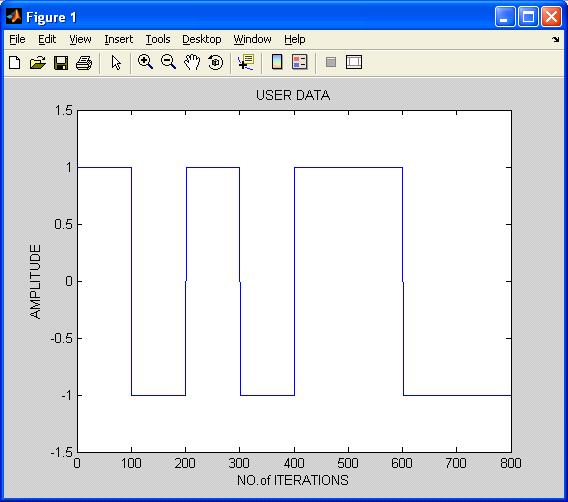
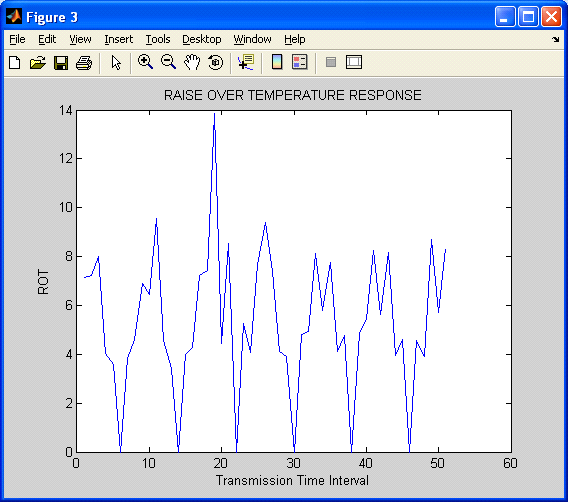
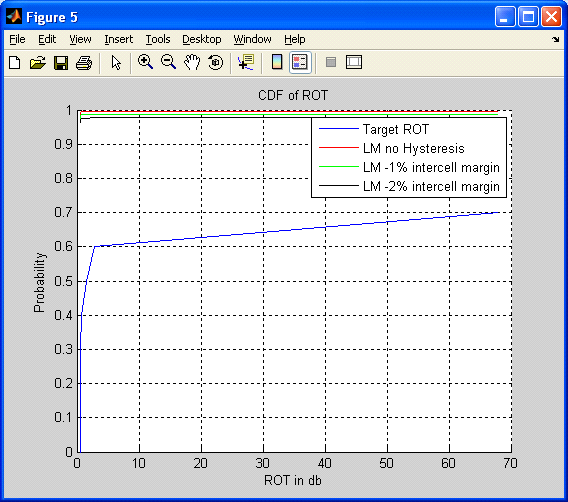
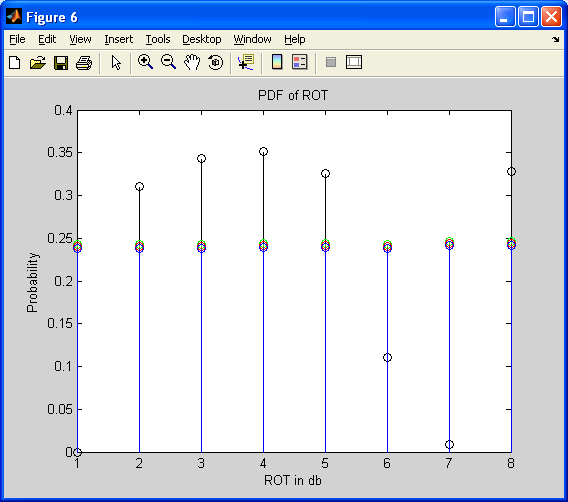
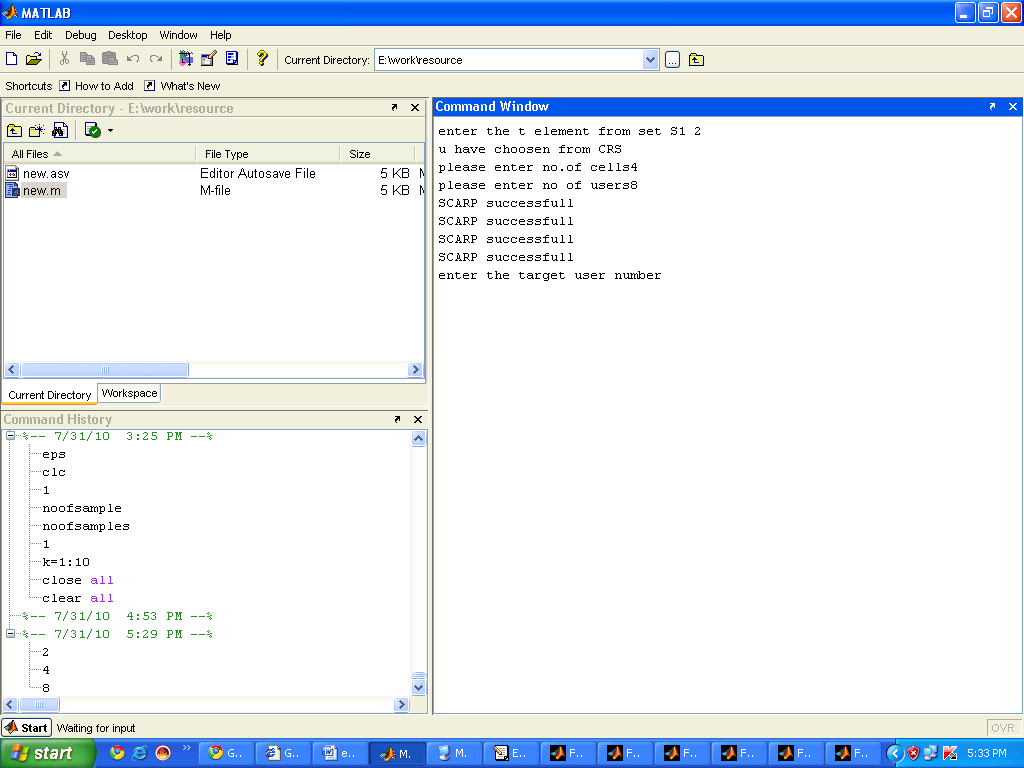
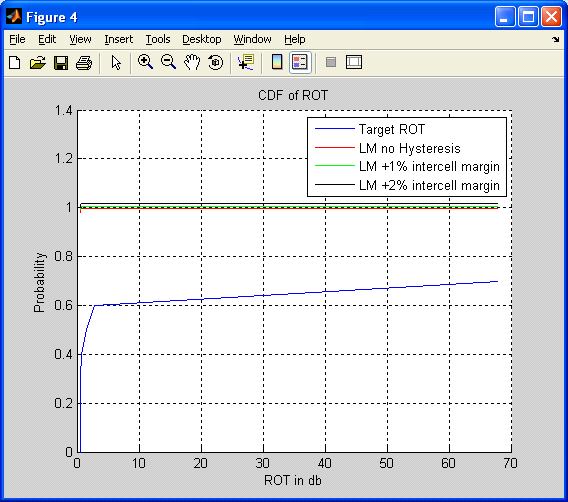
Dear/median I want some low cast project for presentation with details including necessary diagrams circuit .
With regard
Shivakumar
Sir,
Plz give me report of An Efficient Resource Allocation Strategy for Future Wireless Cellular Systems.bcz further research plz help me.
My email id
rajuparmar037@gmail.com